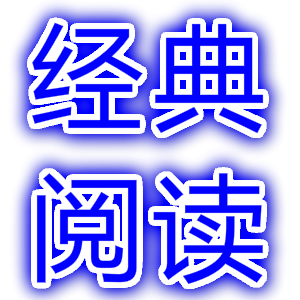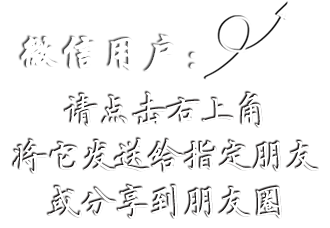英文导游词(合集)3篇
篇一:英文导游词:云南 篇一
Welcome to Yunnan, Welcome to Tengchong! It’s my honor to be your guide. Today we are going to visit the volcanoes and hot springs in Tengchong, which are the most famous here.
As we will get there in a few minutes, first allow me to give you a brief intoduction of Tengchong. Tengchong is located in the southwest of China and occupies an area of 5800 square kilometers. There are 23 nationalities here, such as 汉、傣、回、白 nationalities and so on. When we mentioned Tengchong, three things will come into mind, which are: the volcanoes and hot springs having 10,000 years, the border city having 1,000 years and the fair of jade having 100 years.
Later we will get to the volcanoes and the hot spring, so now I can tell you something about the latter two ones. They all can reflect the long history Tengchong has. Tengchong is a city on boarder. And because of its location, it has been an important place for military reasons. And that’s a part of its history. It’s also regarded as the county of manners, and it is the hometown of so many famous people. And another part of its history is that Tengchong is one trade center of jade between China and Burma. So don’t forget to get a round to the jade fair. I think you will feel interested.
OK, everyone, here is the Library of the Volcanoes. Now let’s have a look at 。The volcanoes in Tengchong are famous in China, and it’s one of the four groups of volcanoes in China. The strong extravasations are the cause of the landform of Tengchong. There is a lieder in Tengchong saying that:” Such a place Tengchong, nine in ten mountains have no peaks.” It’s very vivid, from that you can see so many volcanoes are in Tengchong. There are 97 volcanoes in Tengchong now with high value of tourism and scientific research.
篇二:英文导游词 篇二
Ladies and gentlemen, today we are going to visit a famous Buddhist temple---the Jade Buddha Temple.
Before visiting the temple, I’d like to say a few words about the religious situation in Shanghai. Our constitution stipulates that every Chinese citizen is ensured the freedom of religious belief. There are four major religions in practice in Shanghai, namely, Buddhism, Taoism, Islam, and Christianity, which is sub-divided into the Catholic Church and the Protestant Church. When it comes to Buddhist temples in China, they are usually classified into three sects, i.e. temples for meditation, for preaching and for practicing Buddhist disciplines. The Jade Buddha Temple is a temple for meditation, and is well-known both at home and abroad.
The temple was first built during the reign of Emperor Guangxu of Qing Dynasty, when a monk named Hui Gen went on a pilgrimage to Burma and brought back five jade statues of Sakyamuni. On his way back to Mount Putuo via Shanghai, he left two jade statues here, one in sitting posture and the other, reclining. He had a temple specially built as a shrine for these two statues in 1882. later the temple was
partly destroyed by fire and in 1928 a new temple was completed on the present site.
Just opposite the temple gate, there stands a giant screen wall. Various designs, such as dragon, phoenix, elephant, crane and peony are carved on it. In Chinese legend, all these things are considered the symbols of fortune, wealth, longevity and auspiciousness. Chinese people used to set up a wall in front of the house so as to keep the evils away.
Now ladies and gentlemen, please turn around. Here we can see the temple gate. It is also called the Sanmen Gate, or say, the Gate of Three Extrications. The door in the middle is called the Door of Emptiness, to its right is the Door of Non-phenomenon, and to its left, the Door of Non-Action. Sanmen Gate is also called the Mountain Gate because most famous temples in China are found deep in mountains. But the Sanmen gate does not open except on the first and the fifteenth of every lunar month. Now this way to the entrance.
Ladies and gentlemen, the first hall is the Heavenly King Hall. We will use the rear door, please follow me.
(in the Heavenly King Hall next to the southern entrance)
Here we can find the statue of a fat and smiling monk with bared belly. He is Bodhisattva Maitreya. His smile is so contagious that you will smile with him and forget all your worries. So he is also called the Laughing Buddha. According to Buddhist scripture, he is now practicing Buddhism in the Tusita Heaven. After 4000 years, which is equal to 5.67 billion years on the earth, he will become successor to Sakyamuni under a Long Hua Tree in Hualin Garden. Hence another name the Future Buddha.
But this statue we see here is not the real image of Bodhisattva Maitreya, it is just his incarnation.。 it is said that During the Five Dynasties Period, 1000 years ago, there lived in Fenhua in Zhejiang Province a monk named Qi Ci, who always carried a wooden staff with a cloth sack on his shoulder. He often went around towns and in streets to beg alms. Therefore he became known as “the Cloth Sack Monk”。 He always smiled and laughed, looking as happy as ever.
When he was dying, he left the message saying that he was the incarnation of Bodhisattva Maitreya. So his image is enshrined in the Buddhist Temple as the incarnation of Bodhisattva Maitreya.
(on the eastern side of the Heavenly King Hall)
On the two sides of the hall are enshrined four statues. They are so-called Four Heavenly Kings. In the Buddhist legend, there is in the center of the world a highest mountain called Mount Sumeru. Halfway on it is a mountain called Mount Ghandara with four peaks. On each peak lives a Heavenly King protecting the Buddhist heaven. The first one is the Southern King---King of Developing Merits. His duty is to educate all living creatures and develop king-heartedness.
He is holding a sword in his hand which can emit a ray to chop off the enemies’ heads. The one next to him is the Eastern King---King of Protection for Buddhism. He is holding in his hand a pipa, which is somewhat like a guitar. With this pipa, he offers music to the Buddha. Meanwhile this pipa is a magic weapon. It can send out a musical rhythm to defeat the enemy by tormenting brain and causing him to lose combatability. Now ladies and gentlemen, please come over to this side.(on the western side of the Heavenly King Hall)
The first one on this side is the Northern King---King of Virtue. He is so called because of his virtue. He is holding a parasol-shaped stela in his hand. The parasol can be opened into a canopy in Buddhist processions. It is at the same time a magic umbrella. Once it is opened in the battle field, the sky turns dark and a wind-storm rises, defeating the enemy with a dizzy spell and then it closes up capturing all the enemies. Next to him is the Western King--King of Far Sight.
He observes the world with his penetrating eyes. He is holding a dragon-shaped silk rope. The rope is actually a net, with which he converts people to Buddhism just like catching fish with a net. This dragon also has a magic power. It can spurt water from its mouth and drown the enemy in floods.
(in the Heavenly King Hall next to the rear door)
The Statue facing the rear door is Bodhisattva Skanda. He is always dressed in armour with a worrior’s club in his hand. Originally he was one of the eight heavenly generals under the Southern King of Developing Merits. Later he has been enshrined here because of his bravery. He is also a god of message, a fleet-foot runner, so when visitors come to the temple, he will immediately report to the Buddha in the Grand Hall.
Now ladies and gentlemen, that’s all for the Heavenly King Hall. Please follow me and look out the threshold and the steps.
Now we can see a giant tripod in the courtyard. It is actually a giant incense burner. It was donated by some Buddhist laymen who believed that by donating something the Buddha they can help purify the souls of their dead relatives from sins and relieve them from purgatory.
Now this is the main hall, known as the Grand Hall or Grand Hall of the Great Sage. It is the main structure in every Buddhist temple, where the statue of Sakyamuni, the founder of Buddhism is enshrined.
篇三:英文导游词 篇三
Welcome to CHINA, Welcome to SHENZHEN Please sit back and relax, Your luggage will be sent to the hotel by another bus,so you do not have to worry about it.
Let me introduce my team first. Mr x is our driver,He has 20years of driving underhis belt, so we are in very safe hands. I always call my English name is _,my Chinese name is _,you may call me _ or Mr_, which is my family name. we are from SHENZHEN OVERSEAS INTERNATIONAL TRE SERVICE,On behalf of _and my colleagues, I ’d like to extend a warm welcome to you all.
During your stay in our city, I will be you local guide, I will do everything possible to make your visit a pleasant experience.If you have any problems or requests,Pls do not hesitate to let me know.
you are going to stay at the Crown plaza hotel, a luxurious ,five star hotel, Althouth the hotel is not exactly in downtown SHENZHEN, it is strategically located with easy access to many tourist attractions. As you will be staying in our city for two days, you will do well to remember the number of our bus and my Phone NO., the bus NO. is _ ,my phone NO.is _. let me repeat.。.。
There is one thing I must warn you against, You must not drink an tap water in the hotel, because un boiled water might make you ill.
I do hope you will enjoy your time in our city.
《英文导游词(合集)3篇》出自:卡耐基范文网链接地址:http://m.gjknj.com/special/45289.html 转载请保留,谢谢!
- 上一篇:天坛导游词(精彩8篇)
- 下一篇:初二体育教学工作计划【优秀6篇】
相关文章
推荐文章
- 跟兔子有关好听的网名(优秀2篇)
- 好听特别的西餐厅名字推荐优秀4篇
- 一个字的网名带符号【优秀5篇】
- 非主流网名超拽最新3篇
- 经典古风的四字网名【最新5篇】
- 最女性化的网名【最新6篇】
- 改变运气的微信名字【精选3篇】
- 炫酷快手昵称3篇
- 最火微信网名优秀5篇
- 最火微信网名(5篇)
- 狗尾巴草花语含义以及名字的由来优秀3篇
- 最火微信网名(优秀6篇)
- 带来好运财运的微信名字最新5篇
- 最火微信网名(最新9篇)
- 好听稀少的男孩名字【最新4篇】
- 检讨书(精选4篇)
- 女生的网名最新10篇
- 最新新少先队员入队申请书【优秀9篇】
- 年度述职报告【优秀8篇】
- 平安夜活动方案优秀6篇
- 生日答谢词(优秀9篇)
- 关爱残疾人活动方案【优秀8篇】
- 三八妇女节女工活动通讯稿(最新6篇)
- 中班育儿心得【8篇】
- 饭后多久可以喝茶(最新3篇)
- 腊月二十九习俗有哪些优秀3篇
- 购销合同范本实用10篇
- 会计学习心得体会【优秀5篇】
- 实习协议书优秀7篇
- 迪拜旅游注意事项是什么(最新7篇)
- 集体土地使用权出租协议书(最新9篇)
- 个人房屋出租合同最新8篇
- 供水协议书(通用5篇)
- 车库买卖合同书模板(通用3篇)
- 大学生转专业申请书范文优秀4篇
- 学生的鉴定评语(优秀6篇)
- 党课内容范文2022【优秀3篇】
- 元旦策划活动方案【最新10篇】
- 新员工培训心得体会优秀10篇
- 2022年党员承诺书(最新3篇)
- 新产品推广方案(优秀3篇)
- 公司中秋节活动方案【优秀8篇】
- 安全大检查反思材料优秀5篇
- 过年放假通知【8篇】
- 元宵节放假通知优秀9篇
- 爱心活动策划书(7篇)
- 房屋租赁合同范文模板(最新6篇)
- 初中班级活动方案(优秀4篇)
- 幼儿园转让协议书实用5篇
- 个人年终述职报告(最新4篇)
- 安全责任协议书(最新8篇)
- 沁园春·长沙原文翻译注释及赏析(优秀3篇)
- 房子的租房合同最新7篇
- 个人债权转让协议6篇
- 供货合同最新6篇
- 债务转让合同最新6篇
- 股东合作协议书9篇
- 投资合作协议书最新3篇
- 合作建房合同范本(优秀7篇)
- 最新劳动合同范本【10篇】
推荐专题
- 端午节活动个人总结大全
- 试用期员工转正工作总结
- 乡镇基层干部个人工作总结大全
- 2021年信访工作总结大全
- 2021年安全生产主题演讲稿大全
- 护林员个人工作总结大全
- 森林防火工作总结大全
- 政法队伍教育整顿工作总结大全
- 政法队伍教育整顿顽瘴痼疾整治工作总结汇报大全
- 乡镇党委党代会换届工作报告大全
- 优秀党务工作者先进事迹材料大全
- 政法队伍教育整顿查纠整改环节工作总结汇报大全
- 2021年基层党支部工作计划大全
- 2021年下半年党风廉政工作计划大全
- 《红海行动》电影观后感心得体会大全
- 公司员工转正述职报告大全
- 单位职工退休申请书大全
- 2021年防溺水安全建议书大全
- 2021年国庆节促销活动方案大全
- 2021年中秋节活动方案大全
- 国家励志奖学金申请书大全
- 2021年中秋节促销活动方案大全
- 政法队伍教育整顿“顽瘴痼疾"自查自纠情况报告大全
- 政法队伍教育整顿专题民主生活会主持词大全
- 政法队伍教育整顿组织生活会党支部对照检查材料大全
- 政法队伍教育整顿专题民主生活会自我剖析材料大全
- 政法队伍教育整顿专题组织生活会对照检查材料大全
- 关于红色文化宣传主题演讲稿大全
- 优秀党务工作者个人事迹材料大全
- 话廉洁守初心专题研讨个人发言稿大全
- 我为群众服务工作心得体会大全
- 政法队伍教育整顿活动个人自我剖析材料大全
- 政法队伍教育整顿民主生活会个人自查报告大全
- 政法队伍教育整顿专题民主生活会对照检查材料大全
- 政法队伍专题教育整顿个人对照检查材料大全
- 政法干警教育整顿自查自纠对照检查材料大全
- 政法队伍教育整顿民主生活会上的讲话大全
- 政法队伍教育整顿组织生活会对照检查材料大全
- 政协干部培训班个人心得体会大全
- 2021年劳模表彰大会个人心得体会大全
- 2021年防灾减灾日活动总结大全
- 幼儿园防溺水教育活动总结大全
- 幼儿园防溺水安全教育教学方案大全
- 防溺水安全倡议书大全
- 退休教师退休会议上的讲话大全
- 2021年最新干部任职表态发言大全
- 开学典礼上的教师代表发言大全
- 政法队伍教育整顿个人自查报告大全
- 政法队伍教育整顿个人自我剖析大全
- 政法队伍教育整顿个人对照检查大全
- 巡视整改专题民主生活会个人对照检查发言大全
- 最新入党志愿书模板大全
- 医院党风廉政建设工作计划大全
- 入党介绍人的发言稿大全
- 在学校家长会上的发言大全
- 医院医生个人年终总结大全
- 口腔诊所年度工作总结大全
- 教师职业规划报告大全
- 牙科医生工作总结大全
- 政法队伍教育整顿民主生活会自我剖析材料大全




